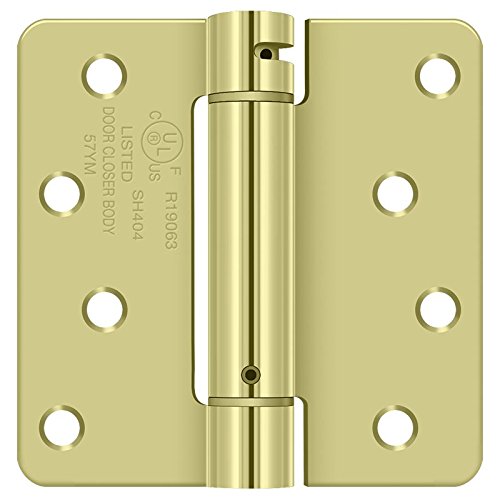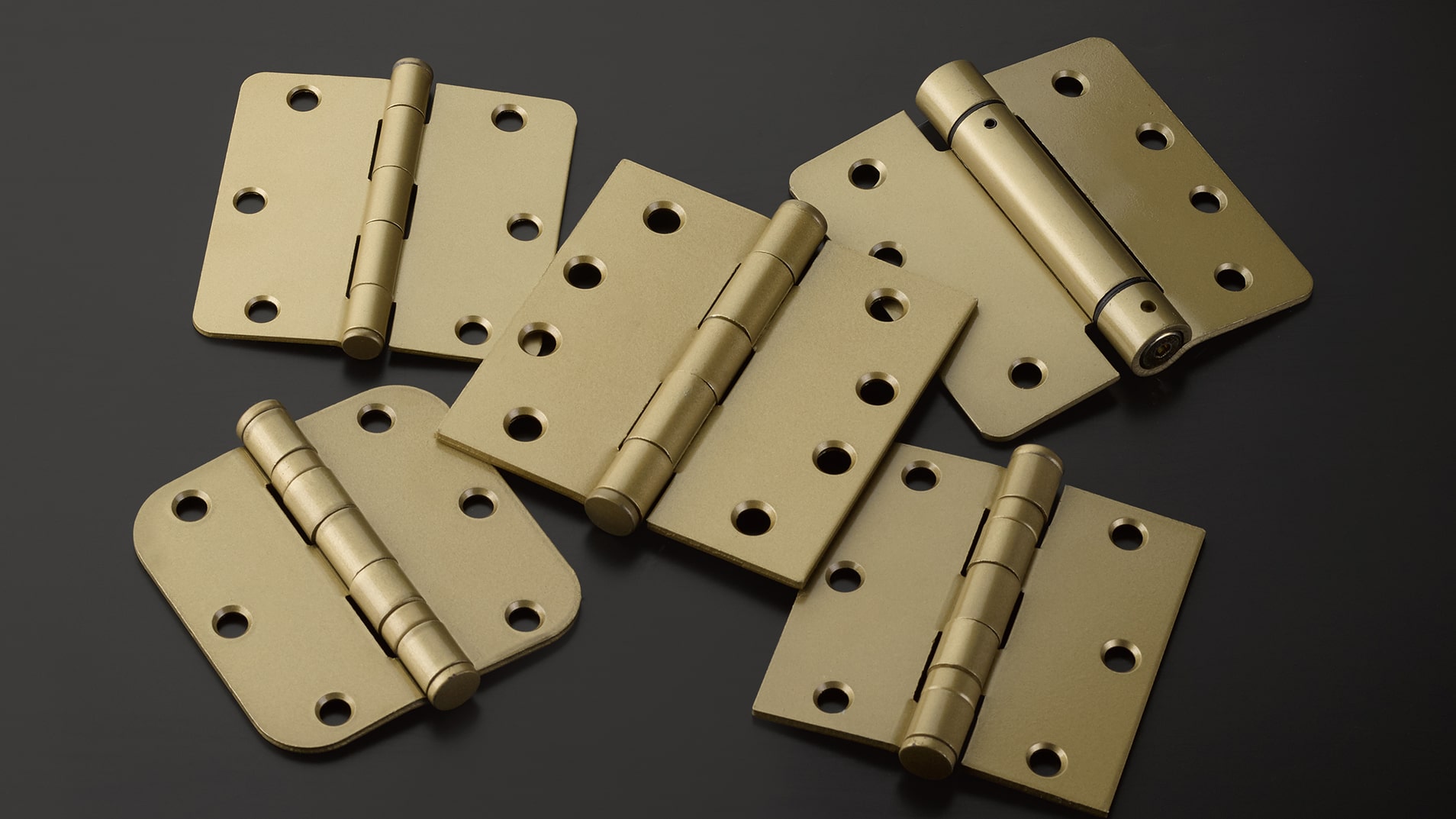Are Your TDC Hinges Installed Correctly? Find Out
A professional installation from a reliable door hinges supplier results in flawless door function. Correctly installed TDC hinges produce specific, observable outcomes.
·The door swings smoothly without rubbing or sticking.
·Gaps between the door and frame appear even on all sides.
·The door sits perfectly flush when fully closed.
·Secure TDC hinges demonstrate no wobble or play.

Is Your Hinge Placement and Alignment Perfect?
Precise hinge placement is the foundation of a perfectly hung door. Even minor misalignments can cause scraping, sticking, or uneven strain on the door and frame. Proper alignment ensures smooth operation from day one and preserves the door's long-term operational integrity. An installer confirms placement by checking three key areas.
Checking Vertical Alignment
Correct vertical spacing distributes the door's weight evenly across the hinges. This balance prevents sagging and ensures lasting stability. Standard placement for three hinges on an interior door follows a precise formula:
1.The top hinge sits 5 inches down from the top edge of the door.
2.The bottom hinge is positioned 10 inches up from the bottom edge.
3.The middle hinge is centered exactly between the top and bottom hinges.
Confirming Horizontal Placement
Horizontal placement, or "setback," determines how the door sits within the frame when closed. This measurement ensures the door closes flush without binding. For a standard 1-3/4″ thick door using TDC’s robust 4-1/2″ butt hinges, the setbacks are:
·Frame Setback: 5/16″ from the hinge edge to the frame's door stop.
·Door Setback: 1/4″ from the hinge edge to the door's edge.
Verifying Mortise Depth
The mortise is the recessed area cut into the door and frame where the hinge leaf sits. Its depth is critical for a flush fit.
Pro Tip: The depth of the mortise must precisely match the thickness of the hinge leaf.
If the mortise is too deep, the door will bind against the frame. If it is too shallow, the hinge will protrude, creating an unsightly and uneven gap between the door and the jamb.
How Smoothly Does Your Door Operate?
A perfectly installed door operates with silent, effortless precision. The quality of the installation becomes immediately apparent in the door's movement. An installer evaluates this by testing its swing, checking the latch, and listening for any unwanted noise.
Testing the Swing Motion
A door with correctly installed TDC hinges swings freely and smoothly. It should hold any position it is left in without drifting open or closed. A door that swings on its own often indicates that the frame is not plumb or the hinges are out of alignment, causing the door to settle at a point of least stress.
An installer diagnoses operational issues by performing a few key checks:
·Swing Test: The door is opened and closed slowly to feel for any resistance, rubbing, or binding.
·Visual Inspection: The installer looks for scuff marks on the frame, floor, or door edge that pinpoint sticking points.
·Frame Check: A long level verifies the door frame is perfectly vertical. A misaligned frame is a common root cause of swing problems.
Checking Latch and Strike Plate Alignment
The door should close and latch securely without any extra effort. A misaligned latch and strike plate will cause issues. Signs of poor alignment include difficulty closing the door, the need to lift or push the door to latch it, and visible scratches around the strike plate. If the latch bolt consistently misses the strike plate hole, a professional must adjust the plate's position to ensure proper engagement and security.
Listening for Squeaks or Grinds
Properly installed TDC hinges operate in complete silence. Any squeaking, grinding, or scraping sounds indicate a problem, often related to friction or debris within the hinge mechanism. These noises should not be present in a new installation.
Professional Solution: For long-term maintenance, unwanted noise can be eliminated with a quality lubricant. Silicone spray and white lithium grease are excellent choices that provide lasting, mess-free lubrication without attracting dust.
Are Your Door Gaps Consistent?
Consistent gaps, or reveals, around a door are a hallmark of a high-quality installation. A professional installer meticulously measures these spaces to ensure they are uniform, which is crucial for both appearance and function.
Measuring the Top and Side Reveals
An installer checks the reveals along the top and sides of the door frame. The goal is a perfectly uniform margin that allows the door to operate without binding. Industry standards provide clear targets for this gap:
·A nominal gap of 1/8 inch is the professional standard.
·This space is roughly the width of a nickel, providing a useful visual guide.
·A tolerance of 1/16 inch is generally considered acceptable.
To achieve this precision, installers often use specialized tools like trim gauges to mark exact reveal lines on the jamb before making any cuts.
Inspecting the Bottom Gap
The clearance at the bottom of the door is equally important but varies based on the flooring. An installer must account for the finished floor height to prevent the door from dragging.
·For hardwood floors, a clearance of 1/4 inch to 1/2 inch is typical.
·For carpeted floors, a slightly larger gap of at least 1/2 inch is recommended to clear the thicker material.
Why Consistent Gaps Matter
Consistent gaps are more than just a cosmetic detail; they are critical for the home's overall performance. An incorrect bottom gap directly impacts a home's HVAC system.
Energy Efficiency Note: A standard ¾-inch door undercut provides far less airflow than an HVAC system requires for proper air return. This forces the system to work harder, leading to higher energy bills and increased wear.
Furthermore, inconsistent gaps make it difficult to install weatherstripping effectively. Since different seals are designed for specific gap sizes, an uneven reveal prevents a tight seal, compromising the door's insulating properties.
Are Your TDC Hinges Secure for the Long Haul?
A secure installation ensures your door remains stable and functional for years. The final checks focus on the hardware itself, confirming that the TDC hinges are firmly anchored and ready to handle daily use. An installer verifies this by confirming screw choice, tightness, and overall hinge stability.
Using the Right Hinge Screws
The screws are the critical link between the hinge, door, and frame. Using the correct screw type and length is essential for a lasting hold. Wood screws are the standard choice due to their excellent grip. The screw length depends on the door's weight and type.
| Door Type | Recommended Screw Length |
|---|---|
| Standard Interior Doors | 2-1/2 inches |
| Heavier Exterior Doors | 3 inches |
| Hollow Core Doors | 1-1/4 inches |
Using screws that are too short for heavy doors can lead to failure. Proper screw selection ensures the TDC hinges can fully support the door's weight.
Checking Screw Tightness
An installer confirms every screw is snug and secure. A loose screw can cause the hinge to shift, leading to misalignment and sagging. However, over-tightening is also a problem, as it can strip the wood in the screw hole.
Repair Tip: If a screw hole becomes stripped, an installer can fix it. One common method involves inserting glue-coated toothpicks or a wooden dowel into the hole to provide new material for the screw to grip.
Testing for Hinge Stability
The final test is a physical check for stability. An installer gently pushes and pulls on the edge of the open door to feel for any wobble or play in the hinges. A properly installed door feels solid, with no movement at the hinge points. The number of TDC hinges used is a key factor in stability. For example, doors up to 90 inches tall require three hinges to distribute weight evenly and prevent sagging over time. This ensures the entire assembly is secure and stable.
A final inspection confirms the door is aligned, operates smoothly, has even gaps, and features secure hinges. An installation passing these checks signifies a professional-level job. The owner can enjoy the lasting quality and flawless function of correctly installed TDC hinges, a hallmark of a job well done.
FAQ
What if a door sags with three hinges?
For an exceptionally heavy or tall door, an installer adds a fourth TDC hinge. This provides necessary extra support and prevents future sagging.
How often do TDC hinges require maintenance?
TDC hinges are built for durability and require minimal upkeep. An installer lubricates the hinges annually to maintain smooth, silent performance for years to come.
Related articles
-

Beyond the Lock The Importance of Secure Door Hinges
A strong lock is useless if intruders can remove your door hinges. Learn how standard hinges create a major security risk and why upgrading them is essential.Oct-29-2025 Learn More >> -

An In-Depth Look at Hinge Materials and Finishes
Select the right hinges by comparing materials like stainless steel and brass and finishes like powder coating to ensure long-term durability and corrosion resistance.Oct-29-2025 Learn More >> -

Top 10 Black Cabinet Hinges to Modernize Your Home
Considering black cabinet hinges? This guide reviews the top 10 styles, from soft-close concealed to decorative strap, to help you select the perfect hardware.Oct-29-2025 Learn More >>
To Provide You with Better Service

Contact
Tel: +8613325838282
Add: 6265 Providence Way Eastvale,CA 92880




